Invented by David Weiner, Karuppiah Muthumani, Niranjan Y. Sardesai, University of Pennsylvania Penn, Inovio Pharmaceuticals Inc
The urgency to develop a vaccine for MERS-CoV stems from the potential threat it poses to global public health. The World Health Organization (WHO) has classified MERS-CoV as a priority disease for research and development of vaccines. The virus has a high fatality rate, estimated to be around 35%, and there is currently no specific treatment available for the disease.
The market for MERS-CoV vaccines is driven by the need to prevent the further spread of the virus and protect vulnerable populations. The primary target groups for vaccination include healthcare workers, individuals with underlying health conditions, and those living in or traveling to areas with known MERS-CoV outbreaks.
Several pharmaceutical companies and research institutions have been actively working on developing a vaccine for MERS-CoV. These efforts have been supported by government funding, public-private partnerships, and collaborations between academia and industry. The development of a vaccine involves extensive research, preclinical and clinical trials, and regulatory approval processes.
One of the leading candidates in the race for a MERS-CoV vaccine is a vaccine developed by the National Institutes of Health (NIH) in the United States. The vaccine, known as the MERS-CoV spike protein nanoparticle vaccine, has shown promising results in preclinical studies and is currently undergoing phase I clinical trials. Other companies, such as Novavax and Inovio Pharmaceuticals, are also working on their own vaccine candidates.
The market potential for a MERS-CoV vaccine is significant. The global market for vaccines is already valued at billions of dollars, and the demand for vaccines against emerging infectious diseases is expected to grow in the coming years. The COVID-19 pandemic has further highlighted the importance of vaccines in preventing and controlling viral outbreaks, leading to increased investments in vaccine research and development.
However, there are several challenges that need to be addressed in the development and commercialization of a MERS-CoV vaccine. These include the need for robust clinical trials to demonstrate safety and efficacy, regulatory approval processes, manufacturing scalability, and affordability for widespread distribution.
In conclusion, the market for MERS-CoV vaccine is driven by the urgent need to prevent the further spread of the virus and protect vulnerable populations. The development of a vaccine involves extensive research and collaboration between academia and industry. While there are challenges to overcome, the potential market for a MERS-CoV vaccine is significant, given the global demand for vaccines against emerging infectious diseases.
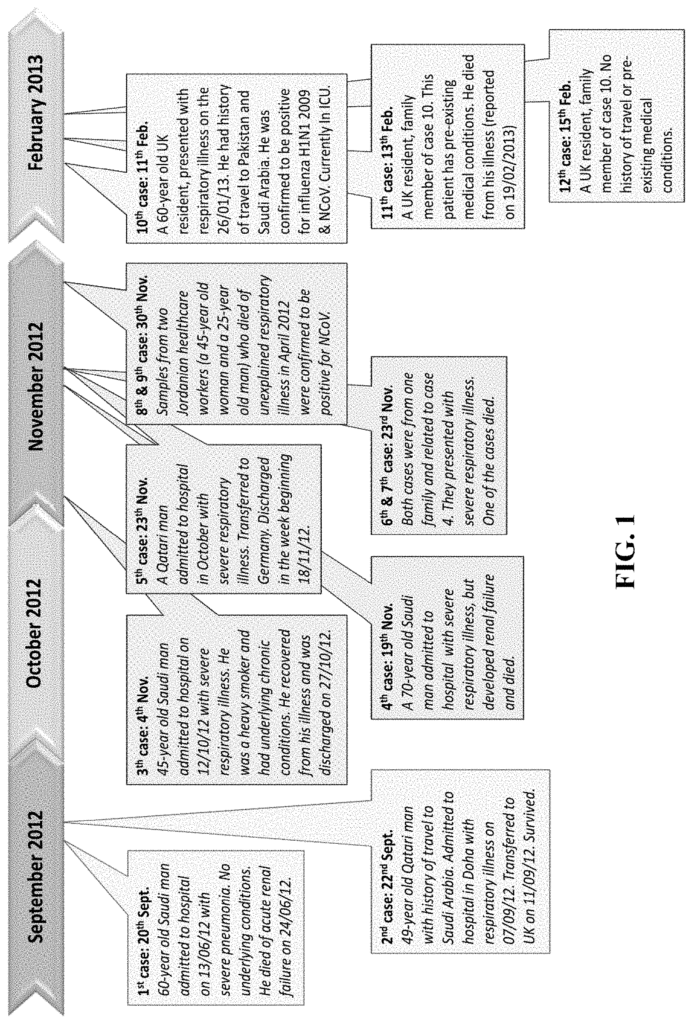
The University of Pennsylvania Penn, Inovio Pharmaceuticals Inc invention works as follows
Disclosed is a new vaccine containing a Middle East Respiratory Syndrome Coronavirus (MERS CoV) antigen. Antigens can be consensus antigens. The consensus antigen may be a spike consensus antigen. The present invention also discloses a method for treating a patient in need of the vaccine by administering it to the patient.
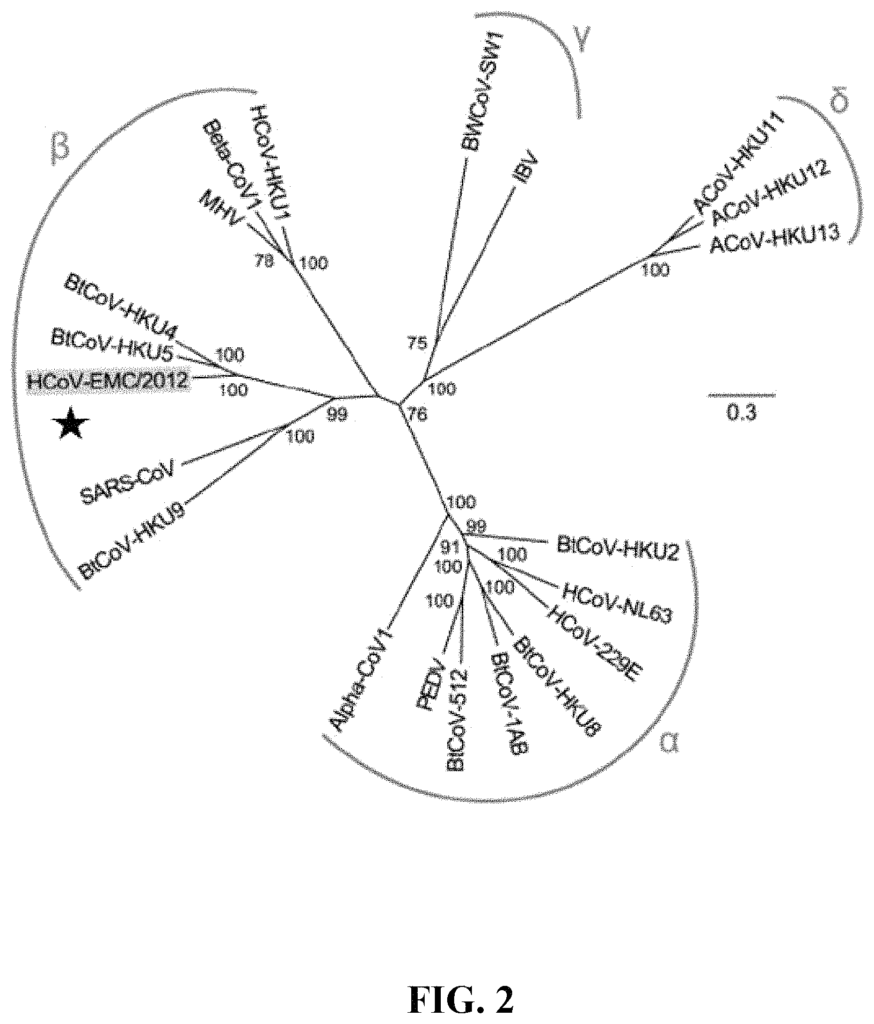
Background for MERS-CoV vaccine
Coronaviruses are a virus family that is common in the world and causes a variety of diseases, from the common cold up to severe acute respiratory syndrome. Coronaviruses are also responsible for a variety of diseases in animal species. “Human coronaviruses such as 229E, OC43 NL63 and HKU1 have become endemic among the population.
In 2012, a new coronavirus was discovered in Saudi Arabia. It is now called the Middle East Respiratory Syndrome Coronavirus (MERS CoV). 1). MERS-CoV is classified as a betacoronavirus. MERS-CoV strains HCoV/2012 are starred in FIG. Infections with MERS-CoV have also been reported in other parts of the Middle East, such as Qatar and Jordan, and in Europe. MERS-CoV infection manifested as a severe acute respiratory disease with symptoms such as fever, cough and shortness breath. MERS-CoV infections have caused death in about half of the reported cases. The majority of cases are in men aged between 40 and 50. A small number of cases reported involved mild respiratory illnesses. “Transmission of MERS-CoV from human to human is possible but limited at the moment.
Accordingly, there is a need in the field of medicine for the development and application of a safe, effective, and applicable vaccine to MERS CoV. This would provide protection from and promote survival of MERS CoV infection.
The present invention is directed at an immunogenic composition. The invention can be directed towards a vaccine that contains a nucleic-acid molecule. This nucleic-acid molecule may contain a sequence of nucleic acids with at least 90% identity along the entire length.
The present invention also relates to a vaccine containing a nucleic-acid molecule. This nucleic-acid molecule encodes a protein containing an amino acids sequence that has at least 90% identity along the entire length for the amino acids sequence in SEQ NO:2; or a peptide incorporating an amino acids sequence with at least 90% identity across the entire length for the amino acids sequence in SEQ NO:4.
The present invention further relates to a nucleic-acid molecule that contains the nucleic-acid sequence as set forth in SEQID NO:1.
The present invention further relates to a nucleic-acid molecule that contains the sequence of nucleic acids set forth in SEQID NO:3.
The present invention also relates to a peptide containing the amino acid sequence as shown in SEQ ID No:2.
The present invention also relates to a peptide containing the amino acid sequence as set forth in SEQID NO:4.
The present invention also relates to a vaccination containing an antigen encoded with SEQID NO:1 or NO:3.
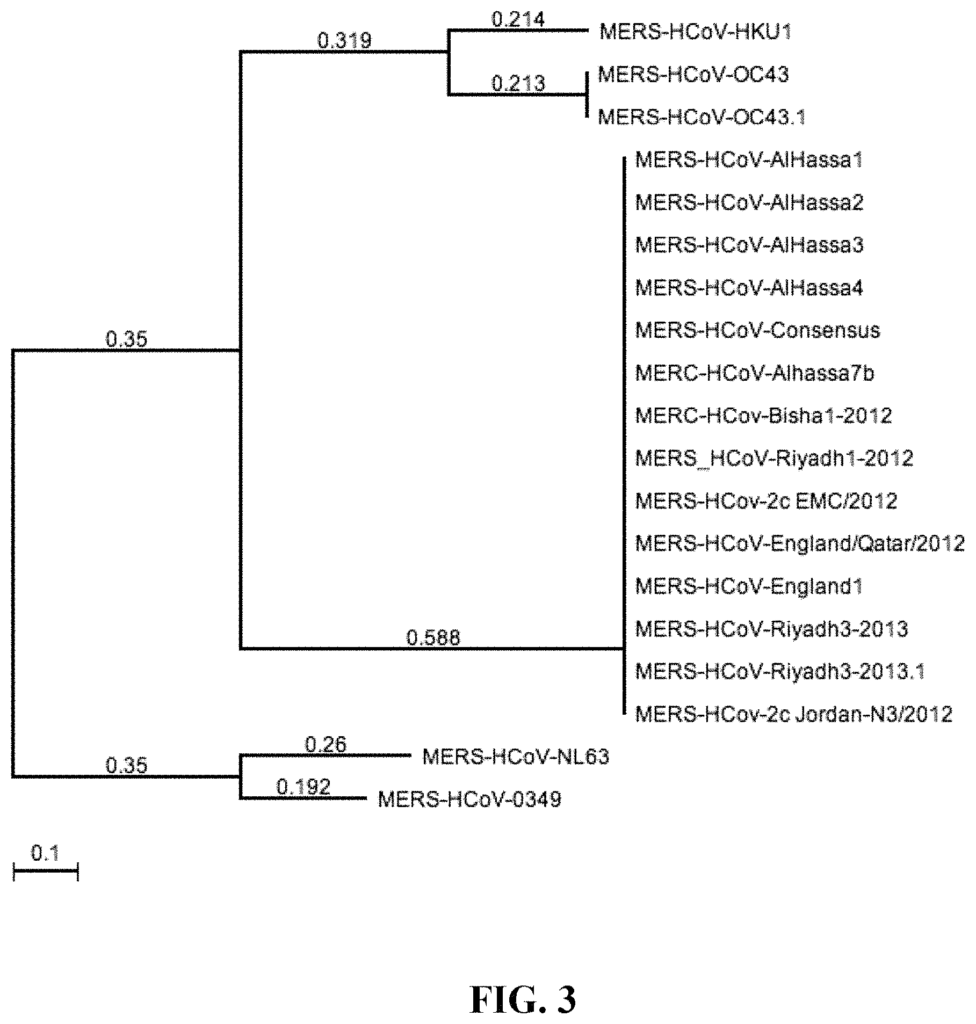
The present invention also relates to a vaccine that comprises a peptide. In this case, the peptide may comprise an amino-acid sequence with at least 90% identity along the entire length of SEQID NO:2; or it can comprise a sequence of amino acids having at least 90% identity along the entire length SEQID NO:4;
The present invention also relates to a way of inducing an immunity against the Middle East Respiratory Syndrome Coronavirus (MERS CoV) in a patient who is in need. The method may involve administering to the subject one or more vaccines, nucleic acids molecules, or other peptides.
The present invention also relates to a method for protecting a subject who needs it from infection by a Middle East Respiratory Syndrome Coronavirus (MERS CoV). The method may include administering to the subject one or more vaccines, nucleic acids molecules, or other peptides.
The present invention also relates to a treatment method for a subject who is in need of it against Middle East Respiratory Syndrome Coronavirus (MERS CoV). The method may include administering to the subject one or more vaccines, nucleic acids molecules, or other peptides.
The present invention is a vaccine that contains a Middle East Respiratory Syndrome Coronavirus (MERS CoV) antigen. MERS is a highly pathogenic and new virus that only emerged in 2012. The vaccine described herein, therefore, is one of first vaccines targeting MERS. The vaccine is a treatment against this new, highly pathogenic virus for which there was no prior treatment and the potential for pandemic still exists.
The MERS antigen could be a MERS consensus spike antigen. The MERS consensus spike can be derived by combining the spike antigens of different strains of MERS. MERS-CoV’s consensus spike antigen may not contain a cytoplasmic region. The unique sequences in the MERS consensus spike antigen make the vaccine widely applicable to many strains of MERS. The vaccine is universally protected against MERS-CoV strains, including genetically different variants.
The vaccine can be used for protection against or treatment of any strain of MERS-CoV. The vaccine can trigger both humoral and cellular immune responses against the MERS antigen spike. The vaccine can elicit antibodies such as immunoglobulin G antibodies (IgGs) that are reactive to the MERS CoV spike antigen. The vaccine can also elicit a CD8+ or CD4+ T-cell response that is reactive to the MERS CoV spike antigen, and produces interferon-gamma. The vaccine can also elicit CD8+ and CD4+ T cell responses that are reactive to the MERS-CoV spike antigen and produce interferon-gamma (IFN-? “Interleukin-2” (IL-2), tumor necrosis factor alpha (TNF-?
1. Definitions
All technical and scientific terms are defined in this document to have the same meaning that a person of ordinary skill would understand. The present document will prevail in the event of a conflict. This includes definitions. The preferred methods and materials will be described in the following sections, but methods and material similar to or equivalent to what is described here can also be used for testing or practice of this invention. All publications, patents, patent applications and other references are incorporated in full by reference. “The materials, methods and examples described herein are intended only as illustrations and not to be restrictive.
The terms “comprise(s)” ?include(s),? ?having,? ?has,? ?can,? ?contain(s),? The words?contain(s)? and variations thereof are meant to be transitional terms or phrases that can include additional acts or structures. The singular forms are?a?,? ?and? The plural forms of?and? The plural form of a word is used unless the context clearly dictates that it should not be. The present disclosure contemplates also other embodiments “comprising” ?consisting of? “consisting of” The embodiments or elements described herein are included, whether they have been explicitly stated or not.
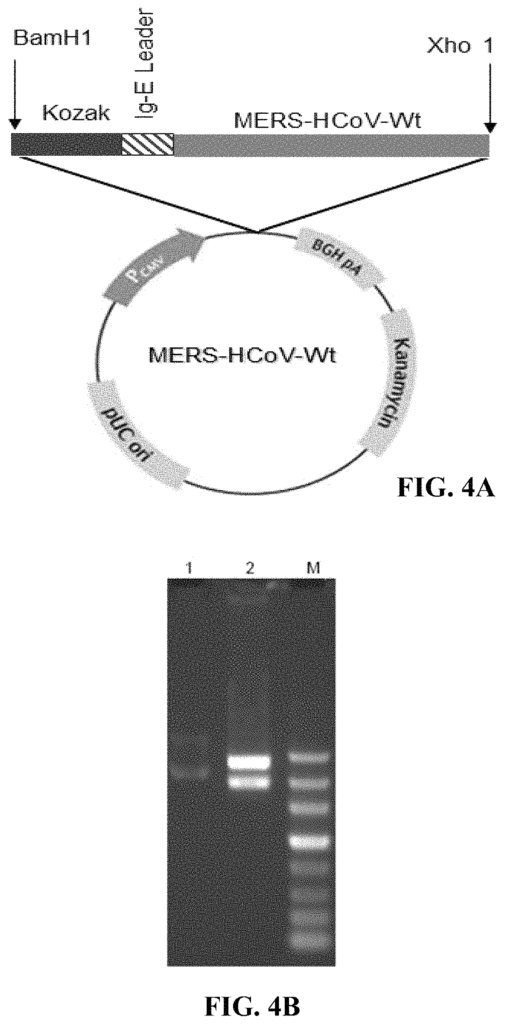
?Adjuvant? “Adjuvant” is used in this document to refer to any molecule that can be added to a vaccine to increase its immunogenicity.
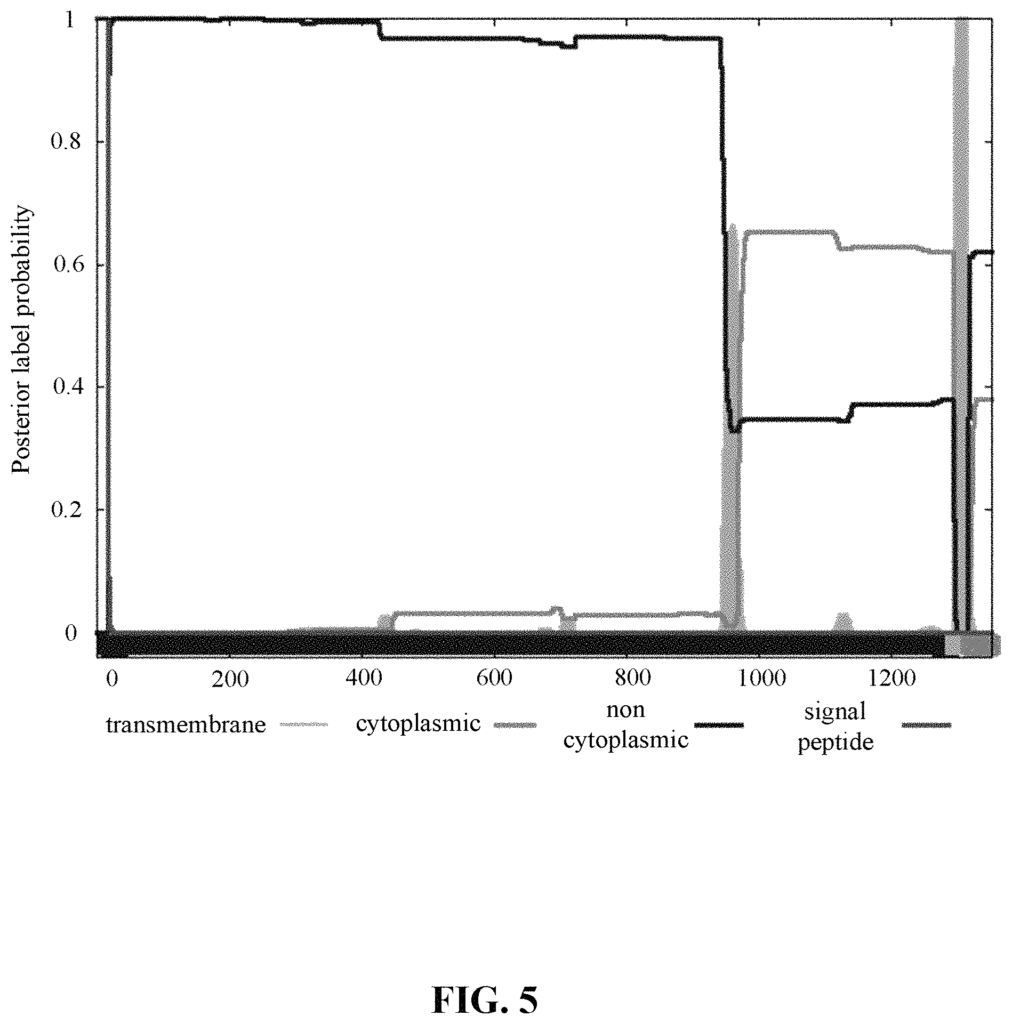
Click here to view the patent on Google Patents.
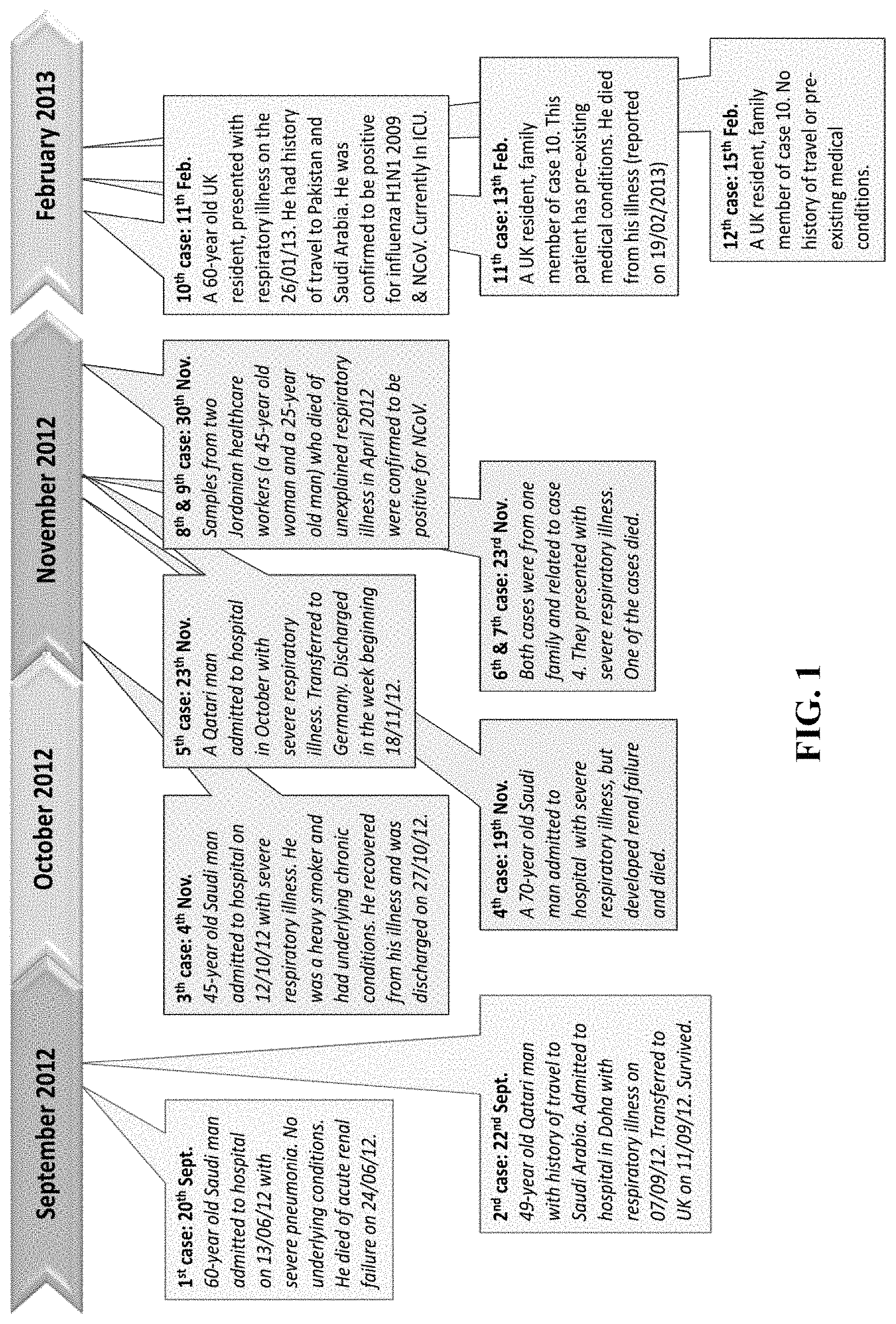
Leave a Reply